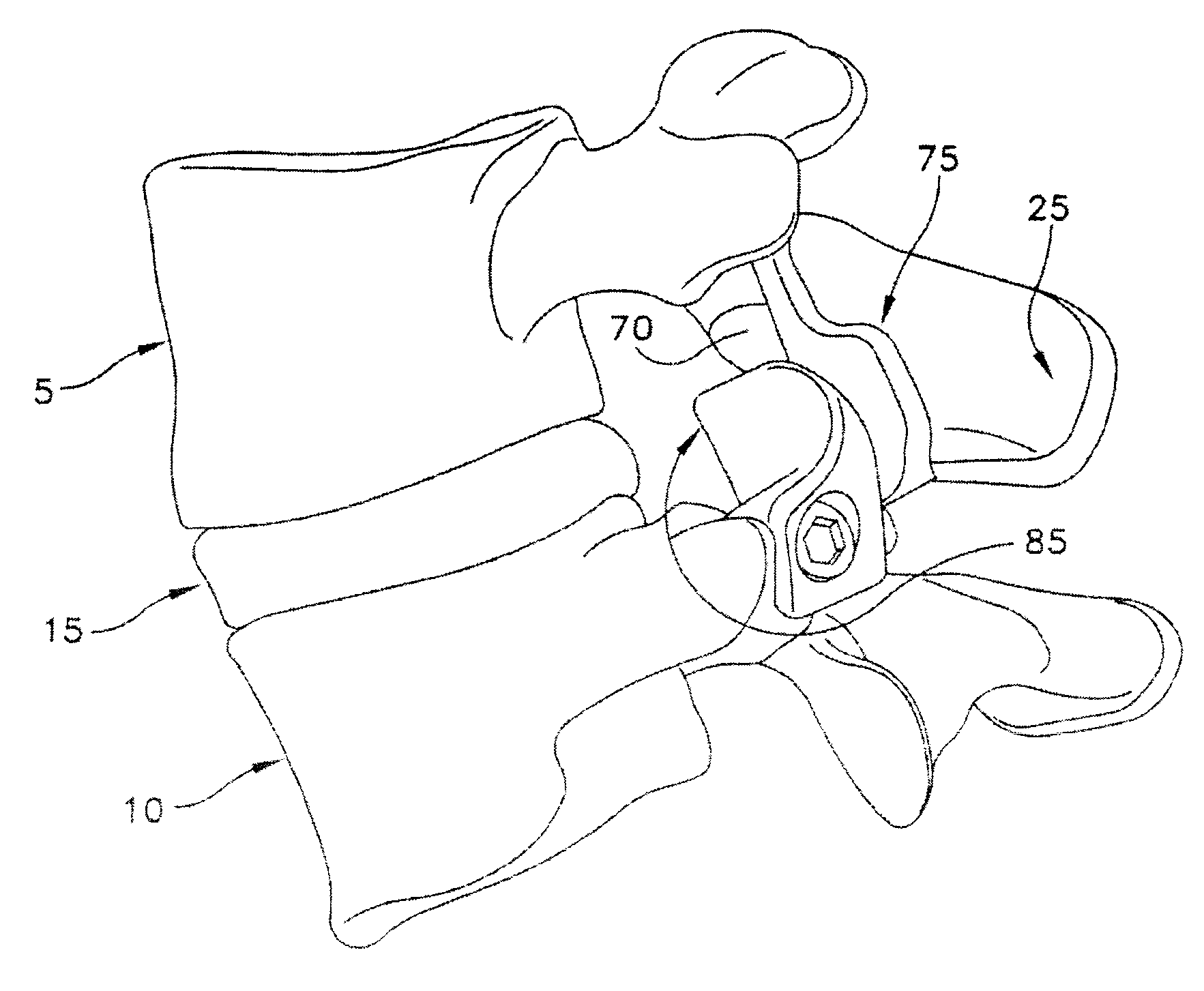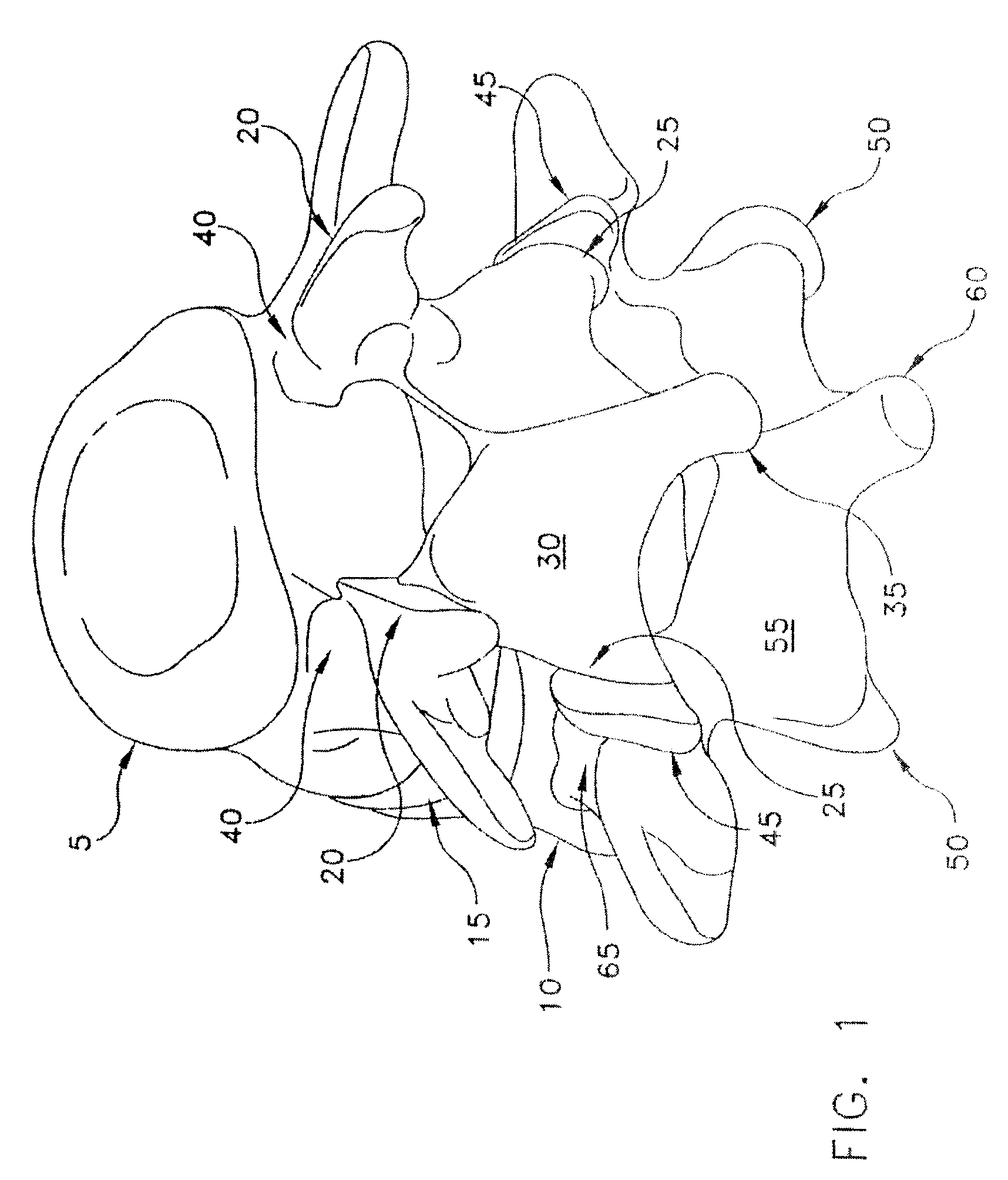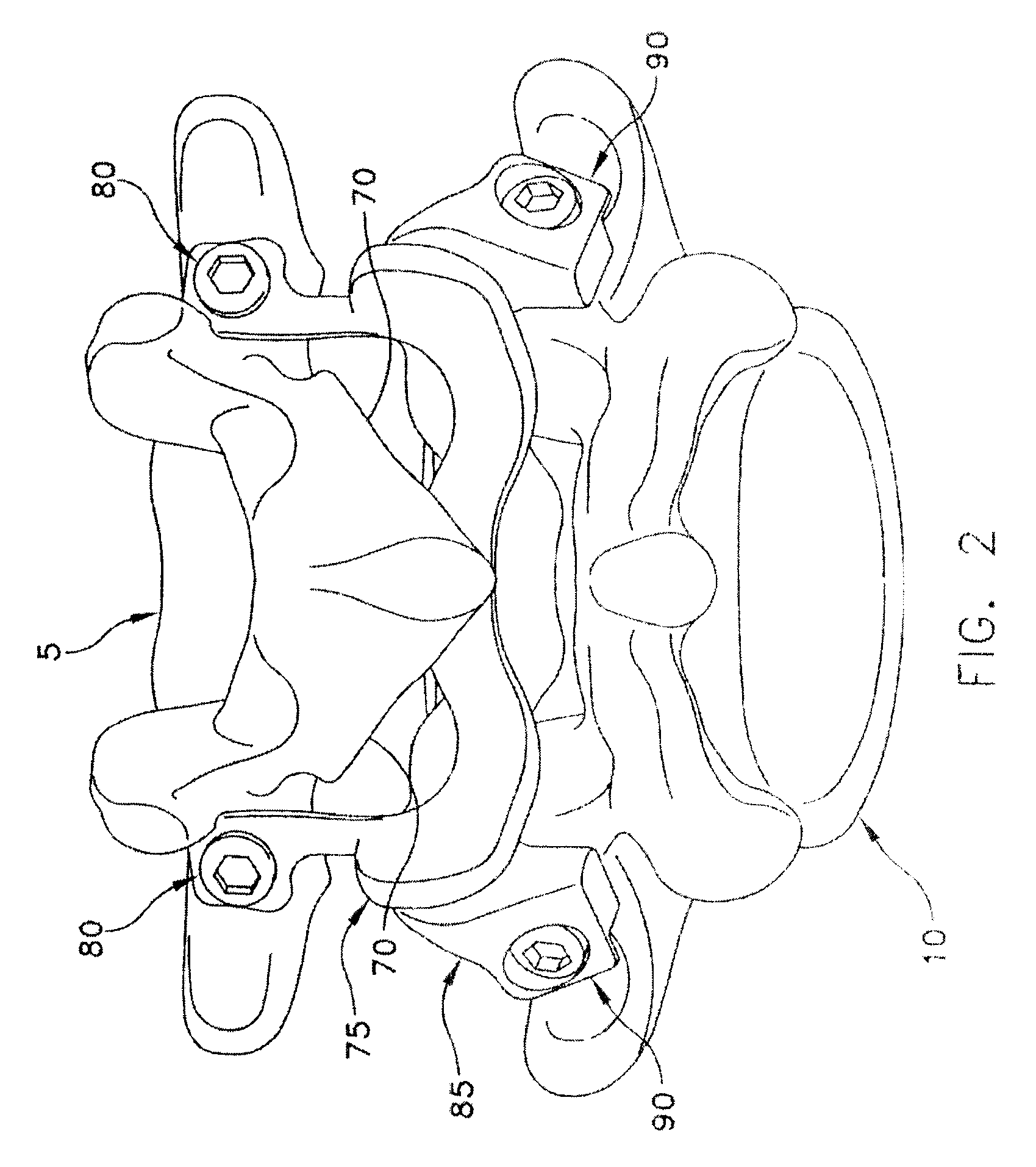Multiple Facet Joint Replacement
a facet joint and multiple technology, applied in the field of surgical devices, can solve the problems of limiting the range of motion, causing debilitating pain, and affecting the function of the spine,
- Summary
- Abstract
- Description
- Claims
- Application Information
AI Technical Summary
Benefits of technology
Problems solved by technology
Method used
Image
Examples
Embodiment Construction
[0044] Referring first to FIG. 1, there is shown a superior vertebra 5 and an inferior vertebra 10, with an intervertebral disc 15 located in between. Vertebra 5 has superior facets 20, inferior facets 25, a lamina (also sometimes referred to as a posterior arch) 30, a spinous process 35, and pedicles 40. Vertebra 10 has superior facets 45, inferior facets 50, a posterior arch 55, a spinous process 60, and pedicles 65 (only one of which is seen in FIG. 1).
[0045] Referring now to FIG. 2, the left and right inferior facets 25 of vertebra 5 have been resected at 70 and a bilateral inferior facet prosthesis 75 has been attached to vertebra 5 using screw fasteners 80. Similarly, the left and right superior facets 45 of vertebra 10 have been resected at 82 (FIG. 7) and a bilateral superior facet prosthesis 85 has been attached to vertebra 10 using screw fasteners 90.
[0046] In FIG. 3 it can be appreciated that bilateral inferior facet prosthesis 75 replicates the natural anatomy when com...
PUM
 Login to View More
Login to View More Abstract
Description
Claims
Application Information
 Login to View More
Login to View More - R&D
- Intellectual Property
- Life Sciences
- Materials
- Tech Scout
- Unparalleled Data Quality
- Higher Quality Content
- 60% Fewer Hallucinations
Browse by: Latest US Patents, China's latest patents, Technical Efficacy Thesaurus, Application Domain, Technology Topic, Popular Technical Reports.
© 2025 PatSnap. All rights reserved.Legal|Privacy policy|Modern Slavery Act Transparency Statement|Sitemap|About US| Contact US: help@patsnap.com



